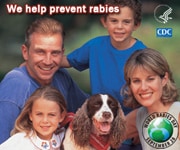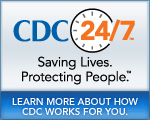Rabies Information for Specific Groups

Rabies is found on all continents except Antarctica. In most countries, the risk of rabies in an encounter with an animal and the precautions necessary to prevent rabies are the same as they are in the United States. When traveling, it is always prudent to avoid approaching any wild or domestic animal.

Veterinarians and their staff play an important public health role by monitoring rabies in their community. In addition to vaccinating client animals, they are frequently the primary source of rabies information for their clients.

One to three people die in the United States every year from rabies, usually due to exposures to indigenous rabid bats, skunks, foxes, or raccoons, or to exposure to rabid dogs while traveling overseas. For this reason, it is important that rabies be considered in all cases of unexplained encephalitis. Rabies is nearly always fatal once symptoms appear, but it can be prevented almost 100% of the time when postexposure prophylaxis including rabies vaccine and immunoglobulin is administered soon after a rabies exposure occurs.

Testing for rabies in animals is done postmortem and may be necessary to determine the rabies exposure risk to humans. Samples requiring confirmation, variant typing, or formalin-fixed tissues may be sent to the CDC for additional diagnostic testing.

